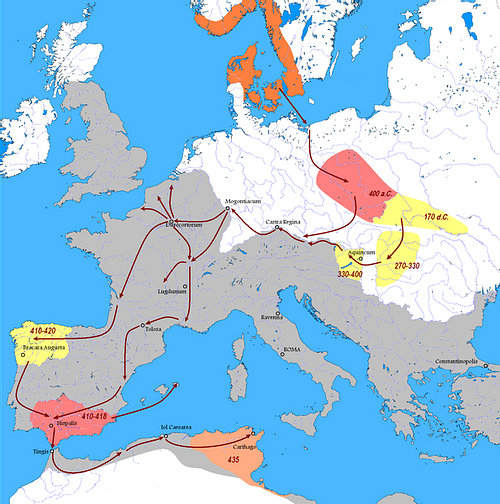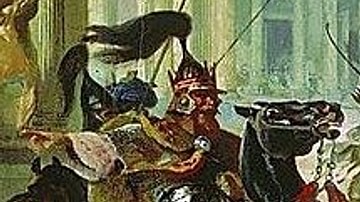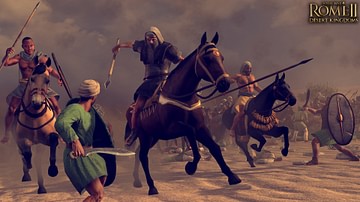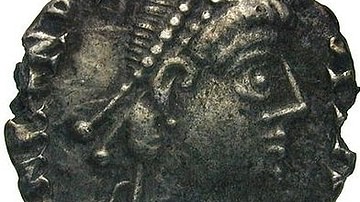Phoenician traders arrived on the North African coast around 900 B.C. and established Carthage (in present-day Tunisia) around 800 B.C. By the sixth century B.C., a Phoenician presence existed at Tipasa (east of Cherchell in Algeria). From their principal center of power at Carthage, the Carthaginians expanded and established small settlements (called emporia in Greek) along the North African coast; these settlements eventually served as market towns as well as anchorages. Hippo Regius (modern Annaba) and Rusicade (modern Skikda) are among the towns of Carthaginian origin on the coast of present-day Algeria.
As Carthaginian power grew, its impact on the indigenous population increased dramatically. Berber civilization was already at a stage in which agriculture, manufacturing, trade, and political organization supported several states. Trade links between Carthage and the Berbers in the interior grew, but territorial expansion also resulted in the enslavement or military recruitment of some Berbers and in the extraction of tribute from others. By the early fourth century B.C., Berbers formed the single largest element of the Carthaginian army. In the Revolt of the Mercenaries, Berber soldiers rebelled from 241 to 238 B.C. after being unpaid following the defeat of Carthage in the First Punic War. They succeeded in obtaining control of much of Carthage's North African territory, and they minted coins bearing the name Libyan, used in Greek to describe natives of North Africa. The Carthaginian state declined because of successive defeats by the Romans in the Punic Wars; in 146 B.C. the city of Carthage was destroyed. As Carthaginian power waned, the influence of Berber leaders in the hinterland grew. By the second century B.C., several large but loosely administered Berber kingdoms had emerged. Two of them were established in Numidia, behind the coastal areas controlled by Carthage. West of Numidia lay Mauretania, which extended across the Moulouya River in Morocco to the Atlantic Ocean. The high point of Berber civilization, unequaled until the coming of the Almohads and Almoravids more than a millennium later, was reached during the reign of Masinissa in the second century B.C. After Masinissa's death in 148 B.C., the Berber kingdoms were divided and reunited several times. Masinissa's line survived until A.D. 24, when the remaining Berber territory was annexed to the Roman Empire.

THE ROMAN ERA
Increases in urbanization and in the area under cultivation during Roman rule caused wholesale dislocations of Berber society. Nomadic tribes were forced to settle or move from traditional rangelands. Sedentary tribes lost their autonomy and connection with the land. Berber opposition to the Roman presence was nearly constant. The Roman emperor Trajan (r. A.D. 98-117) established a frontier in the south by encircling the Aurès and Nemencha mountains and building a line of forts from Vescera (modern Biskra) to Ad Majores (Hennchir Besseriani, southeast of Biskra). The defensive line extended at least as far as Castellum Dimmidi (modern Messaad, southwest of Biskra), Roman Algeria's southernmost fort. Romans settled and developed the area around Sitifis (modern Sétif) in the second century, but farther west the influence of Rome did not extend beyond the coast and principal military roads until much later.
The Roman military presence in North Africa was relatively small, consisting of about 28,000 troops and auxiliaries in Numidia and the two Mauretanian provinces. Starting in the second century A.D., these garrisons were manned mostly by local inhabitants.
Aside from Carthage, urbanization in North Africa came in part with the establishment of settlements of veterans under the Roman emperors Claudius (r. A.D. 41-54), Nerva (r. A.D. 96-98), and Trajan. In Algeria such settlements included Tipasa, Cuicul (modern Djemila, northeast of Sétif), Thamugadi (modern Timgad, southeast of Sétif), and Sitifis. The prosperity of most towns depended on agriculture. Called the "granary of the empire," North Africa, according to one estimate, produced 1 million tons of cereals each year, one-quarter of which was exported. Other crops included fruit, figs, grapes, and beans. By the second century A.D., olive oil rivaled cereals as an export item.
The beginnings of the decline of the Roman Empire were less serious in North Africa than elsewhere. There were uprisings, however. In A.D. 238, landowners rebelled unsuccessfully against the emperor's fiscal policies. Sporadic tribal revolts in the Mauretanian mountains followed from 253 to 288. The towns also suffered economic difficulties, and building activity almost ceased.
The towns of Roman North Africa had a substantial Jewish population. Some Jews were deported from Palestine in the first and second centuries A.D. for rebelling against Roman rule; others had come earlier with Punic settlers. In addition, a number of Berber tribes had converted to Judaism.
Christianity arrived in the second century and soon gained converts in the towns and among slaves. More than eighty bishops, some from distant frontier regions of Numidia, attended the Council of Carthage in 256. By the end of the fourth century, the settled areas had become Christianized, and some Berber tribes had converted en masse.
A division in the church that came to be known as the Donatist controversy began in 313 among Christians in North Africa. The Donatists stressed the holiness of the church and refused to accept the authority to administer the sacraments of those who had surrendered the scriptures when they were forbidden under the Emperor Diocletaian (r. 284-305). The Donatists also opposed the involvement of Emperor Constantine (r. 306-37) in church affairs in contrast to the majority of Christians who welcomed official imperial recognition.
The occasionally violent controversy has been characterized as a struggle between opponents and supporters of the Roman system. The most articulate North African critic of the Donatist position, which came to be called a heresy, was Augustine, bishop of Hippo Regius. Augustine (354-430) maintained that the unworthiness of a minister did not affect the validity of the sacraments because their true minister was Christ. In his sermons and books Augustine, who is considered a leading exponent of Christian truths, evolved a theory of the right of orthodox Christian rulers to use force against schismatics and heretics. Although the dispute was resolved by a decision of an imperial commission in Carthage in 411, Donatist communities continued to exist through the sixth century.
VANDALS & BYZANTINES
Led by their king, Gaiseric, some 80,000 Vandals, a Germanic tribe, crossed into Africa from Spain in 429. In the following year, the invaders advanced without much opposition to Hippo Regius, which they took after a siege in which Augustine died. After further advances, the Vandals in 435 made an agreement with Rome to limit their control to Numidia and Mauretania. But in 439 Gaiseric conquered and pillaged Carthage and the rest of the province of Africa.
The resulting decline in trade weakened Roman control. Independent kingdoms emerged in mountainous and desert areas, towns were overrun, and Berbers, who had previously been pushed to the edges of the Roman Empire, returned.
Belisarius, general of the Byzantine emperor Justinian based in Constantinople, landed in North Africa in 533 with 16,000 men and within a year destroyed the Vandal kingdom. Local opposition delayed full Byzantine control of the region for twelve years, however, and imperial control, when it came, was but a shadow of the control exercised by Rome. Although an impressive series of fortifications were built, Byzantine rule was compromised by official corruption, incompetence, military weakness, and lack of concern in Constantinople for African affairs. As a result, many rural areas reverted to Berber rule.







